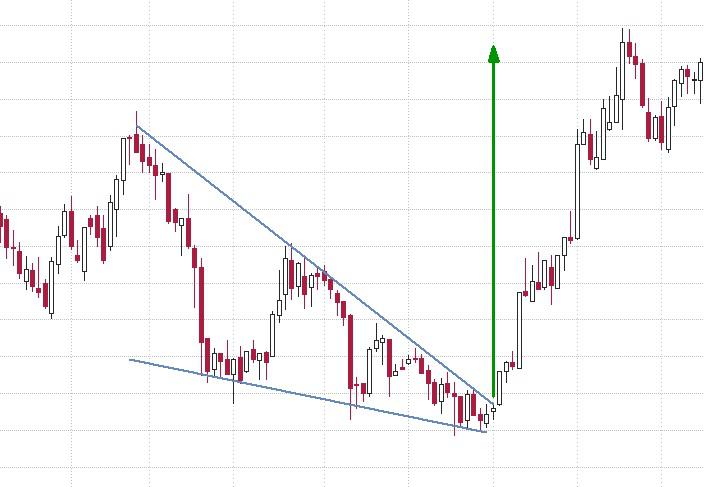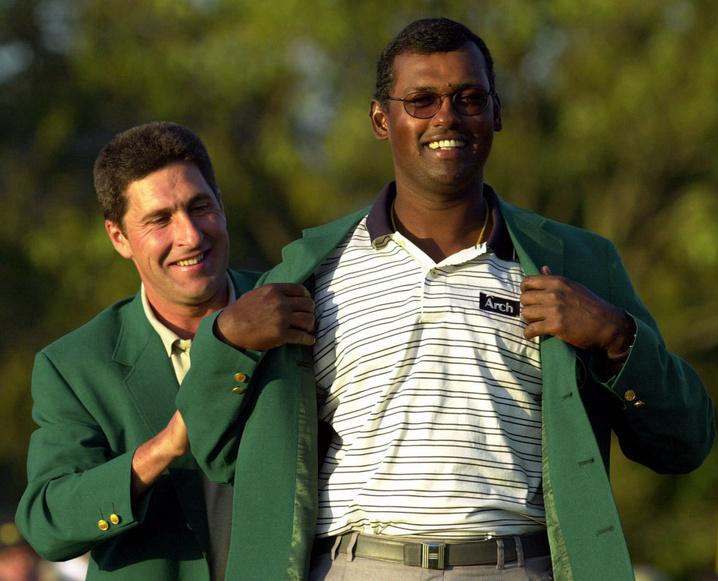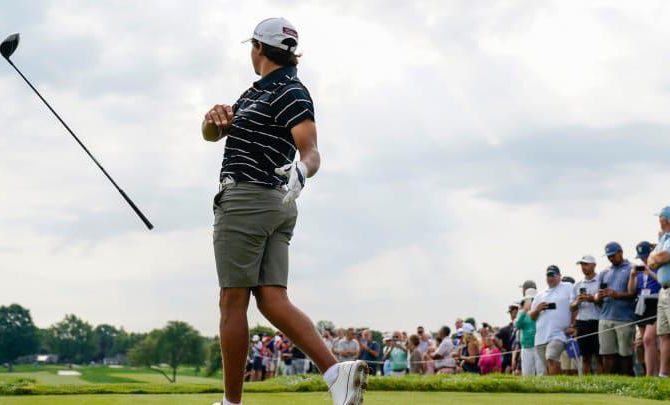This article presents a comprehensive technical analysis of the golf swing of professional golfer Vijay Singh. Vijay Singh is a three-time Major winner known for his exceptional accuracy and impressive distance. The article provides a frame-by-frame breakdown of Singh’s swing, examining key aspects such as grip, stance, posture, backswing, downswing, impact, and follow-through. The analysis is based on video footage captured during Singh’s prime years and utilizes advanced biomechanical principles. This detailed technical analysis aims to identify the crucial elements and techniques that contribute to Singh’s highly effective swing, offering valuable insights for golfers seeking to improve their own game and enhance their accuracy and distance. The article concludes with a discussion of common swing faults and provides practical recommendations based on Singh’s technique.
Biomechanical Analysis of Vijay Singhs Swing Technique
Vijay Singh is known for his exceptional accuracy and distance off the tee. To drive like him, it is essential to understand the biomechanics of his swing, which exhibit several key features.
Firstly, Singh’s grip is crucial for his swing style. His neutral grip encourages a natural, in-to-out swing, creating consistent clubface alignment and ball flight. Moreover, the strength and timing of his wrist action contribute to the clubhead’s stability and speed throughout the downswing. Singh’s body alignment also warrants attention; his posture promotes a balanced and stable base from which he can generate powerful drives.
Singh’s downswing sequence is a masterpiece of coordination and power. His dynamic lower body action initiates the swing, bracing the impact with precise hip rotation and extension. Simultaneously, his upper body rotation generates torque, compiling well-timed wrist movement into an explosive clubhead release that propels the ball with both accuracy and brute force.
| Kinematic Feature | Biomechanical Aspect |
|---|---|
| Grip | Neutral grip for in-to-out clubface alignment |
| Wrist Action | Stabilizes clubhead, generates downswing speed |
| Body Alignment | Balanced posture for stability and balance |
| Downswing Sequence | Dynamic hip rotation and extension |
| Lower Body Action | Creates power and stability at impact |
| Upper Body Rotation | Generates torque and wrist action |
Grip Placement and Posture: Optimization for Accuracy and Consistency
Effective grip placement and posture are crucial for enhancing accuracy and consistency in the golf swing. Vijay Singh, renowned for his technical prowess and impeccable ball-striking, exemplifies the importance of optimizing these elements.
The correct grip position involves holding the club with a neutral grip, ensuring that the palm faces the target and the club rests comfortably in the fingers. Alignment of the grip is equally essential, with the hands placed on the club in a way that the forearms form a straight line. Proper grip pressure is also vital, maintaining a firm but not overly tight grip to promote control and prevent involuntary movements.
Posture plays a pivotal role in establishing a solid base for the swing. Singh stands with his shoulders directly above his hips, creating a balanced and stable foundation. His weight is evenly distributed on both feet, providing a firm grip on the ground for enhanced power generation. The spine is maintained in a neutral position, avoiding excessive arching or slouching, to promote consistent swing mechanics and prevent injuries. Additionally, maintaining a relaxed and poised stance allows for effortless rotation and a fluid swing rhythm.
Address and Ball Position: Establishing a Solid Foundation for Controlled Shots
To achieve controlled shots that consistently hit the target, Vijay Singh meticulously establishes a solid address position. He maintains a balanced posture, with his feet shoulder-width apart and his knees slightly flexed. His spine remains neutral, ensuring ideal posture for proper weight distribution. By positioning his ball correctly in relation to his stance, Vijay Singh optimizes his club path and maximizes accuracy.
For longer shots, he positions the ball forward towards the left heel of his stance, allowing for a steeper angle of attack and a higher ball flight. This setup promotes optimal spin and provides extra carry distance. Conversely, for shorter shots, he positions the ball back toward the right heel, enabling a more controlled swing arc and a lower ball trajectory. By adjusting the ball position based on the desired shot type, Vijay Singh strategically influences spin, trajectory, and distance.
Optimizing address and ball position is paramount for establishing a stable foundation that empowers controlled shots. Vijay Singh’s meticulous approach to these aspects highlights their significance in achieving precision and consistency on the course.
Backswing Mechanics: Achieving Power and Rhythm
The backswing is the initial upward movement of the golf club, establishing the foundation for a powerful and accurate downswing. It comprises three distinct phases: the takeaway, the backswing transition, and the top of the backswing.
Takeaway: The takeaway initiates the backswing by rotating the club away from the ball, forming a shallow arc as it progresses. It influences the plane of the swing, dictating the club’s path to the ball during the downswing. A fluid and synchronized movement during this phase minimizes deviations from the optimal plane.
Transition: As the club continues its upward motion, the backswing transitions into an S-shaped arc. The wrists begin to **** while the left arm extends, promoting clubhead speed. The left shoulder rotates back and down, creating torque in the core and providing the foundation for an explosive downswing. This transition should be smooth, flowing seamlessly into the top of the backswing.
Downswing and Impact: Generating Maximum Clubhead Speed and Accuracy
The downswing and impact phases are crucial for generating maximum clubhead speed and accuracy. Vijay Singh’s smooth and efficient downswing allows him to create tremendous power and maintain exceptional control.
As Singh initiates the downswing, his arms drop down and his weight shifts to his lead foot. His spine angles slightly towards the target, ensuring proper alignment and stability. The club maintains an inside-out swing path, with the clubface slightly open at the start of the downswing. This motion helps square the clubface at impact, minimizing side spin and promoting accuracy.
At impact, Singh’s clubhead speed is at its peak. The club’s descending trajectory generates downward force, creating a powerful strike. His hands release slightly through impact, allowing the clubface to rotate and release its energy into the ball. This controlled release ensures a solid connection and promotes long, straight distances.
| Swing Phase | Key Elements | Vijay Singh’s Technique |
|---|---|---|
| Downswing | Inside-out club path | Clubface slightly open at start of downswing |
| Impact | Descending trajectory | Downward force |
| Release | Controlled release | Clubface rotates and releases energy |
Conclusion
This comprehensive guide to the technical analysis of Vijay Singh’s golf swing has elucidated the fundamental mechanics underlying his accuracy and distance. The detailed examination of his swing sequence, from setup to follow-through, provides invaluable insights for aspiring golfers seeking to enhance their own swing technique. By emulating the key components outlined in this analysis—including proper grip, posture, alignment, and swing path—golfers can lay the foundation for a consistent and powerful swing that delivers both accuracy and distance.
Moreover, this guide highlights the importance of individualized swing analysis. By understanding the nuances of each golfer’s unique physical characteristics and swing tendencies, coaches and players alike can tailor training programs that optimize swing efficiency and minimize the risk of injury. The technical insights provided in this analysis serve as a valuable resource for golfers of all skill levels, enabling them to identify areas for improvement and unlock their full potential on the golf course.





